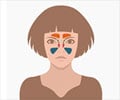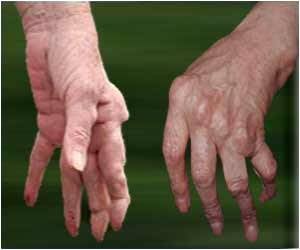The stickiness of mucus that lines our airways can now be measured using gold nanoparticles and light with a new way developed by a team of researchers.

The research team will present their work at The Optical Society's (OSA) 98th Annual Meeting, Frontiers in Optics, being held Oct. 19-23 in Tucson, Arizona, USA.
"People who are suffering from certain lung diseases have thickened mucus," explained Amy Oldenburg, a physicist at the University of North Carolina at Chapel Hill whose research focuses on biomedical imaging systems. "In healthy adults, hair-like cell appendages called cilia line the airways and pull mucus out of the lungs and into the throat. But if the mucus is too viscous it can become trapped in the lungs, making breathing more difficult and also failing to remove pathogens that can cause chronic infections."
Doctors can prescribe mucus-thinning drugs, but have no good way to monitor how the drugs affect the viscosity of mucus at various spots inside the body. This is where Oldenburg and her colleagues' work may help.
The researchers placed coated gold nanorods on the surface of mucus samples and then tracked the rods' diffusion into the mucus by illuminating the samples with laser light and analyzing the way the light bounced off the nanoparticles. The slower the nanorods diffused, the thicker the mucus. The team found this imaging method worked even when the mucus was sliding over a layer of cells—an important finding since mucus inside the human body is usually in motion.
"The ability to monitor how well mucus-thinning treatments are working in real-time may allow us to determine better treatments and tailor them for the individual," said Oldenburg.
Advertisement
"This is a great example of interdisciplinary work in which optical scientists can meet a specific need in the clinic," said Nozomi Nishimura, of Cornell University and one of the FiO subcommittee chairs. "As these types of optical technologies continue to make their way into medical practice, it will both expand the market for the technology as well as improve patient care."
Advertisement
Source-Eurekalert









